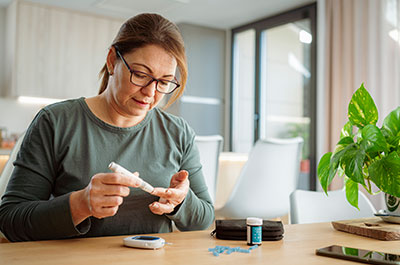Watching someone go through sudden cardiac arrest is a scary experience and one few of us want to think about. But quick action and knowing how to use a device like an automated external defibrillator (AED) can be the difference between life and death, so it’s important to be prepared.
According to the American Heart Association, over 350,000 sudden cardiac arrests occur outside of a hospital each year, and less than 10% of victims survive. Sudden cardiac arrest is a medical emergency that occurs when a sudden electrical malfunction causes the heart to stop beating entirely, resulting in an abrupt, unexpected loss of heart function, breathing and consciousness. Without a heartbeat, blood circulation to the brain and other vital organs ceases instantly. If not responded to immediately, structural brain damage, or even death, can result in a matter of minutes.
However, prompt recognition and response to a sudden cardiac arrest can significantly improve the chance of survival. “For every minute that passes without medical attention, survival rates decrease between 7 and 10%,” says Henry Ford cardiologist Gerald Koenig, M.D., Ph.D.
After calling 911, which should always be the first response to a sudden cardiac arrest, the combination of cardiopulmonary resuscitation (CPR) and the use of an AED can increase survival rates to 38%.
What is an AED and how does it work?

Concerned About Your Heart Health?
AEDs are designed to be used by the general public and most devices feature audible voice prompts that guide the user through the process. However, the general steps for using an AED are as follows:
- Turn on the AED and follow any audio and/or visual prompts.
- Open the person’s shirt and wipe his or her bare chest dry. If the person is wearing any medication patches, you should use a gloved (if possible) hand to remove the patches before wiping the person’s chest.
- Attach the AED pads and plug in the connector (if necessary).
- Make sure no one, including you, is touching the person. Tell everyone to “stand clear.”
- Push the “analyze” button (if necessary) and allow the AED to analyze the person’s heart rhythm.
- If the AED recommends that you deliver a shock to the person, make sure that no one, including you, is touching the person – and tell everyone to “stand clear.” Once clear, press the “shock” button.
- Begin CPR after delivering the shock. If no shock is advised, begin CPR right away. Perform 2 minutes (about 5 cycles) of CPR and continue to follow the AEDs prompts. If you notice obvious signs of life, discontinue CPR and monitor breathing for any changes in condition.
“People who happen to be in the area during a sudden cardiac arrest play a critical role in saving lives. Their actions can mean the difference between life and death,” says Dr. Koenig.
At the first sign of a sudden cardiac arrest, call 911.
Reviewed by Dr. Gerald Koenig, a cardiologist specializing in interventional cardiology and coronary artery disease at Henry Ford West Bloomfield Hospital.



